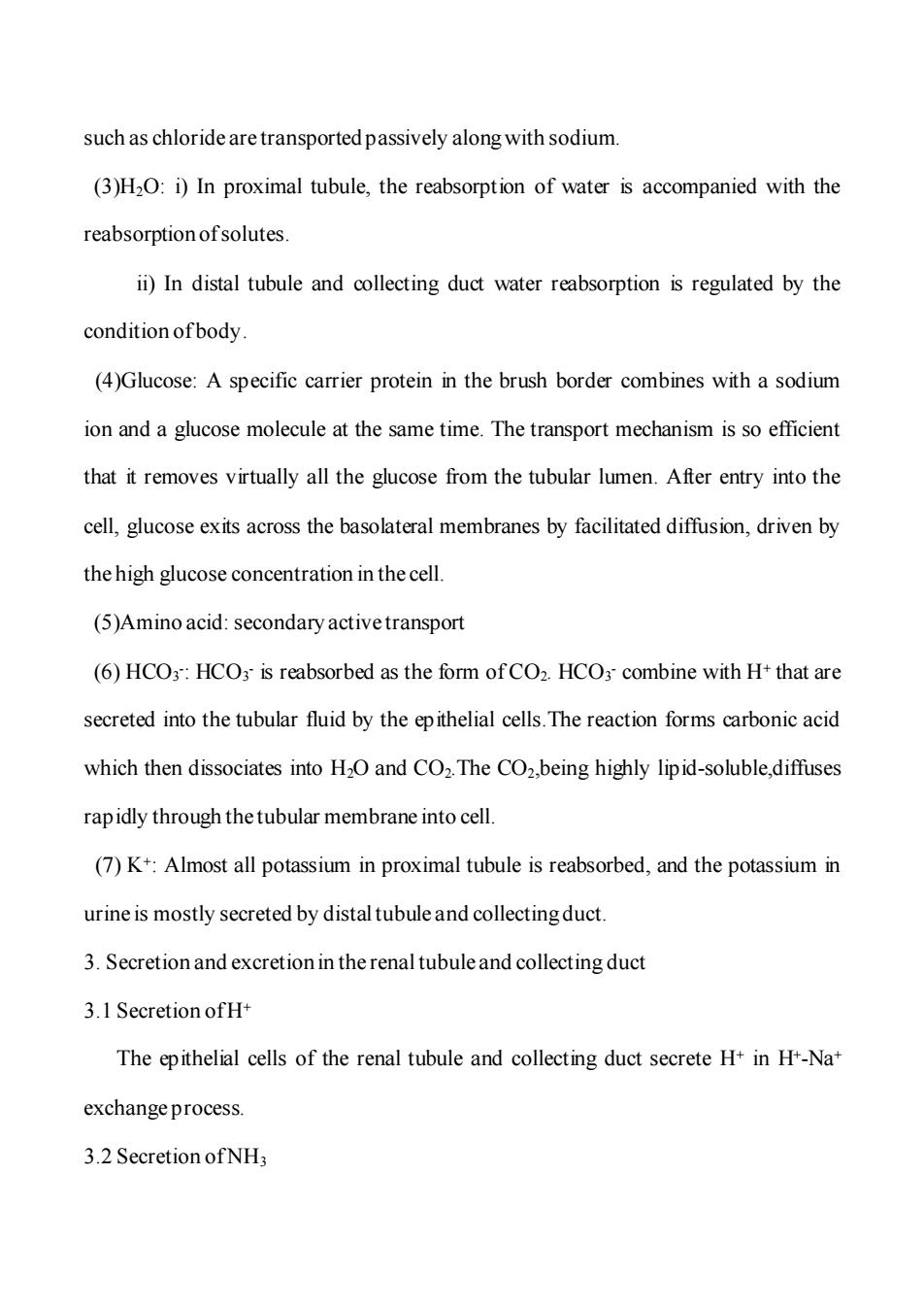正在加载图片...

such as chloride are transported passively along with sodium. (3)H2O:i)In proximal tubule,the reabsorption of water is accompanied with the reabsorption ofsolutes. ii)In distal tubule and collecting duct water reabsorption is regulated by the condition ofbody. (4)Glucose:A specific carrier protein in the brush border combines with a sodium ion and a glucose molecule at the same time.The transport mechanism is so efficient that it removes virtually all the glucose from the tubular lumen.After entry into the cell,glucose exits across the basolateral membranes by facilitated diffusion,driven by the high glucose concentration in the cell. (5)Amino acid:secondary activetransport (6)HCO3:HCO3 is reabsorbed as the form of CO2.HCO3 combine with H+that are secreted into the tubular fluid by the epithelial cells.The reaction forms carbonic acid which then dissociates into H2O and CO2.The CO2,being highly lipid-soluble,diffuses rapidly through the tubular membrane into cell. (7)K+:Almost all potassium in proximal tubule is reabsorbed,and the potassium in urine is mostly secreted by distal tubule and collecting duct. 3.Secretion and excretion in the renal tubule and collecting duct 3.1 Secretion ofH+ The epithelial cells of the renal tubule and collecting duct secrete H+in H+-Na exchange process. 3.2 Secretion ofNH;such as chloride are transported passively along with sodium. (3)H2O: i) In proximal tubule, the reabsorption of water is accompanied with the reabsorption of solutes. ii) In distal tubule and collecting duct water reabsorption is regulated by the condition of body. (4)Glucose: A specific carrier protein in the brush border combines with a sodium ion and a glucose molecule at the same time. The transport mechanism is so efficient that it removes virtually all the glucose from the tubular lumen. After entry into the cell, glucose exits across the basolateral membranes by facilitated diffusion, driven by the high glucose concentration in the cell. (5)Amino acid: secondary active transport (6) HCO3 - : HCO3 - is reabsorbed as the form of CO2. HCO3 - combine with H+ that are secreted into the tubular fluid by the epithelial cells.The reaction forms carbonic acid which then dissociates into H2O and CO2.The CO2,being highly lipid-soluble,diffuses rapidly through the tubular membrane into cell. (7) K+: Almost all potassium in proximal tubule is reabsorbed, and the potassium in urine is mostly secreted by distal tubule and collecting duct. 3. Secretion and excretion in the renal tubule and collecting duct 3.1 Secretion of H+ The epithelial cells of the renal tubule and collecting duct secrete H+ in H+-Na+ exchange process. 3.2 Secretion of NH3